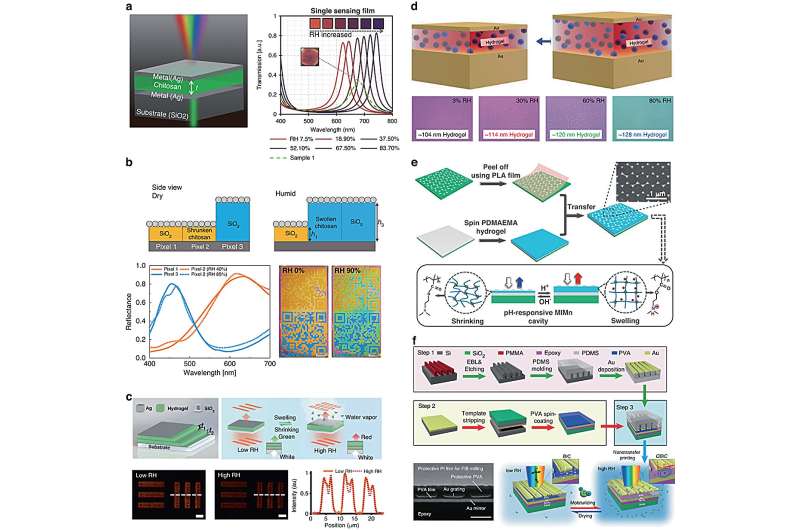This article has been reviewed according to Science X's editorial process and policies. Editors have highlighted the following attributes while ensuring the content's credibility:
fact-checked
peer-reviewed publication
proofread
Unveiling the future of photonics: Hydrogel innovations pave the way

In a review published on 1 January 2024, in the journal Microsystems & Nanoengineering, researchers discuss hydrogels in photonics, highlighting their potential to revolutionize the field. The article emphasizes how hydrogels enable devices to adapt and respond to their environment, promising significant advances in technology and biomedicine.
The review concentrates on harnessing the distinctive properties of hydrogels to develop dynamic photonic devices. Renowned for their deformable nature, hydrogels interact with water molecules through various forces, enabling them to expand and swell. This behavior allows them to modify their optical properties in response to external stimuli, like temperature and pH changes.
The research delves into several fabrication techniques, such as photopolymerization and electron beam lithography, to construct hydrogel structures at the nanoscale. Photopolymerization lets hydrogels form films and structures under UV light, while electron beam lithography facilitates the creation of intricate nanostructures by breaking molecular bonds within the hydrogel.
These techniques pave the way for hydrogel-based photonic devices capable of substantial, tunable optical alterations. Crafted devices can serve as dynamic optical cavities or nanocavities, reacting to external stimuli and offering enhanced optical responses. This innovative approach marks a new era in photonics, promising devices with unprecedented adaptability and responsiveness.
Professor Junsuk Rho, a leading researcher in the study, states, "The integration of hydrogels into photonics marks a paradigm shift. We're not just tweaking existing technologies; we're reimagining them to be more adaptable, responsive, and integrated with our environment."
This research ushers in a new era in photonics, where devices are not merely passive conduits of light but active participants in their environment. It has unveiled the potential of hydrogels in reshaping the realm of active photonics. This breakthrough is set to revolutionize our interaction with photonic devices, affecting everything from everyday technologies to specialized scientific equipment.
More information: Byoungsu Ko et al, Hydrogels for active photonics, Microsystems & Nanoengineering (2024). DOI: 10.1038/s41378-023-00609-w
Journal information: Microsystems and Nanoengineering
Provided by TranSpread




















